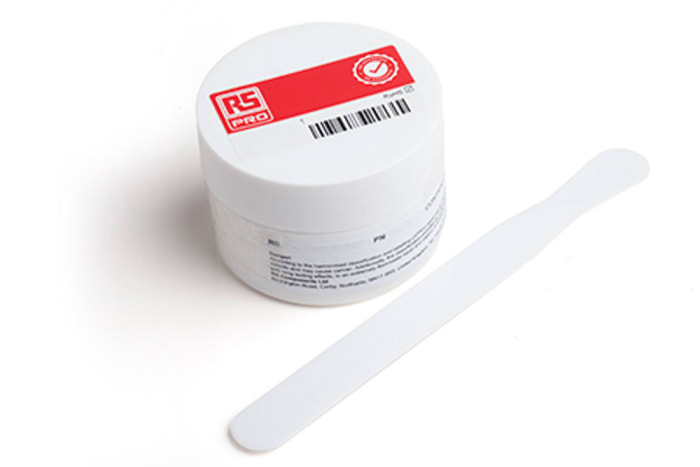RS PRO Thermal Paste, 3.4W/m·K

Documentos Técnicos
Especificações
Brand
RS ProThermal Conductivity
3.4W/m·K
Maximum Operating Temperature
+125°C
Minimum Operating Temperature
-30°C
Operating Temperature Range
-30 → +125 °C
País de Origem
Taiwan, Province Of China
Detalhes do produto
RS PRO Phase Change Interface Material
RS PRO phase change materials are ideal for thermal management applications. Available in this range are phase change interface materials in sheets, resistor pads and as a dispensable paste.
Phase change materials work because they change their state with changes in temperature between the heat source and the heatsink. During this process, the material stores thermal energy which is then released as the material cools. This means that the material can absorb thermal energy as the heat is generated which helps to keep the desired component cool. This improves contact between the surfaces, completely fillling air gaps and increasing heat transfer.
Informações de estoque temporariamente indisponíveis.
Verifique novamente mais tarde.
P.O.A.
1
P.O.A.
1
Documentos Técnicos
Especificações
Brand
RS ProThermal Conductivity
3.4W/m·K
Maximum Operating Temperature
+125°C
Minimum Operating Temperature
-30°C
Operating Temperature Range
-30 → +125 °C
País de Origem
Taiwan, Province Of China
Detalhes do produto
RS PRO Phase Change Interface Material
RS PRO phase change materials are ideal for thermal management applications. Available in this range are phase change interface materials in sheets, resistor pads and as a dispensable paste.
Phase change materials work because they change their state with changes in temperature between the heat source and the heatsink. During this process, the material stores thermal energy which is then released as the material cools. This means that the material can absorb thermal energy as the heat is generated which helps to keep the desired component cool. This improves contact between the surfaces, completely fillling air gaps and increasing heat transfer.
